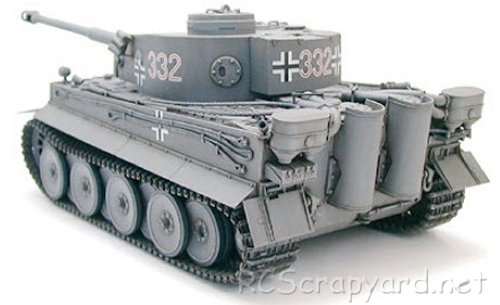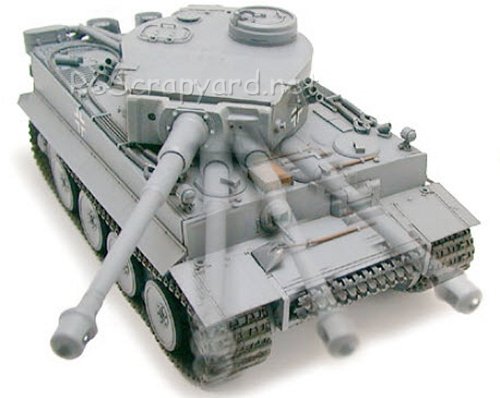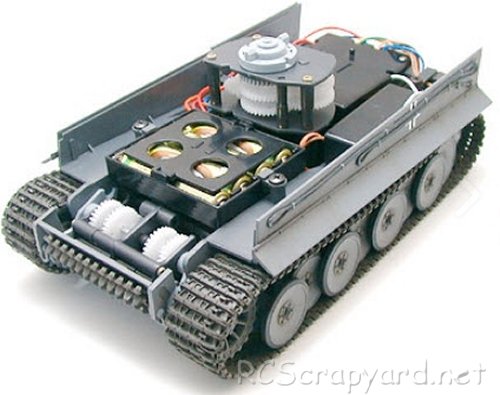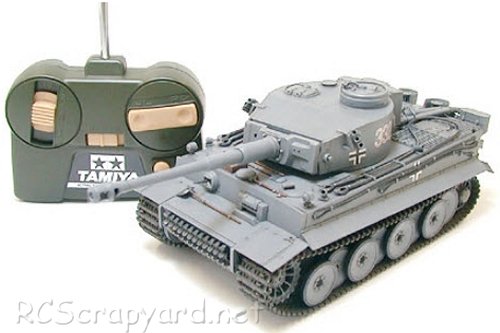

|
|
|


|
Tamiya German Tiger I Early Production - 48202 (Radio Controlled Model Review)1/35 Scale Electric Tank -
Released by Tamiya on October 25, 2000, the 1/35 R/C German Tiger I Early Production (#48202) came with a 2-channel radio system and is driven by 2 motors, allowing realistic tank movement, forward, reverse, running and pivoting. Motors, battery case, switch, pilot lamp and receiver antenna lead are pre-wired. A transmitter button activates the main gun sound effects. 4 x UM-4 (AAA) batteries provide 25 minutes of continuous running time.
▼ Scroll Down for More Images ▼
Rating: 4
|








|
|
|

|




|
Hints, Tips and Information
How to avoid Radio Interference
1/ The first consideration when installing your Receiver into your Electrically Powered Model is to make sure it is well away from the Negative Battery terminal, and the Motor. The Magnetic field can cause stuttering type interference at times of high current draw (i.e., Fast Acceleration) |









|






|
|
|
|
Hints, Tips and Information Electric Motors for RC ModelsWinds and Turns
Q/ What does 15x2 or 17x3 mean? |
|
Hints, Tips and Information
Driving On Road
The basic driving style most commonly used for all forms of on road, tarmac and carpet racing, involves using the full width of the road available, and cutting each apex as tight as possible, whilst keeping complete control of the car on the track. The style, often referred to as "Rounding" looks quite simple to those watching, but to get it right needs good hand eye coordination and lots of practice. |
|
RC Models:
|
Radio & Motors: |
Other
Accessories: |